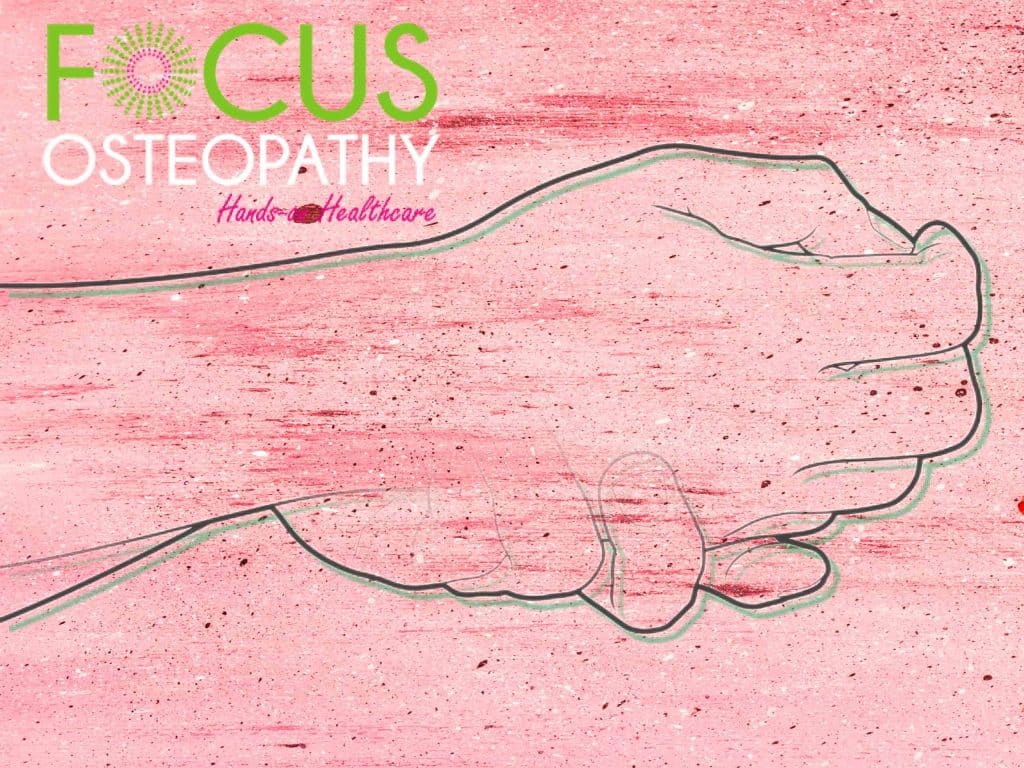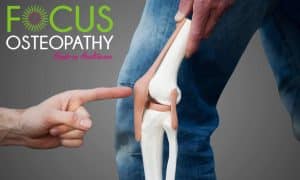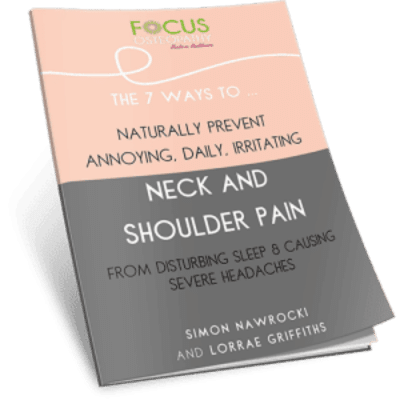Ouch! My wrist has begun to hurt since pregnancy. Seriously, is this a symptom?
Amid the joy of a new pregnancy follows the need to adapt to a vast array of side-effects.
From morning sickness to stomach cramps, headaches, puffy ankles, mood swings and sleeplessness, pregnancy brings many well-known symptoms meaning – even for the strongest willed of women – being a mother-to-be can feel like a lengthy test of endurance.
But what about wrist pain? Did anyone at the family planning mention that wrist pain is a surprisingly common symptom of pregnancy too?
More Recent Healthcare Articles
Yes, it’s true. Up to 40% of pregnant women experience wrist pain in the run-up to delivering their child and sometimes beyond in the post-natal phase.
Irritating wrist pain during pregnancy usually develops thanks to Carpal Tunnel Syndrome (CTS), with pain making itself known during either the second or third trimester of pregnancy.
Seriously, what’s the connection between wrist pain and pregnancy and why does your wrist suddenly hurt so badly?
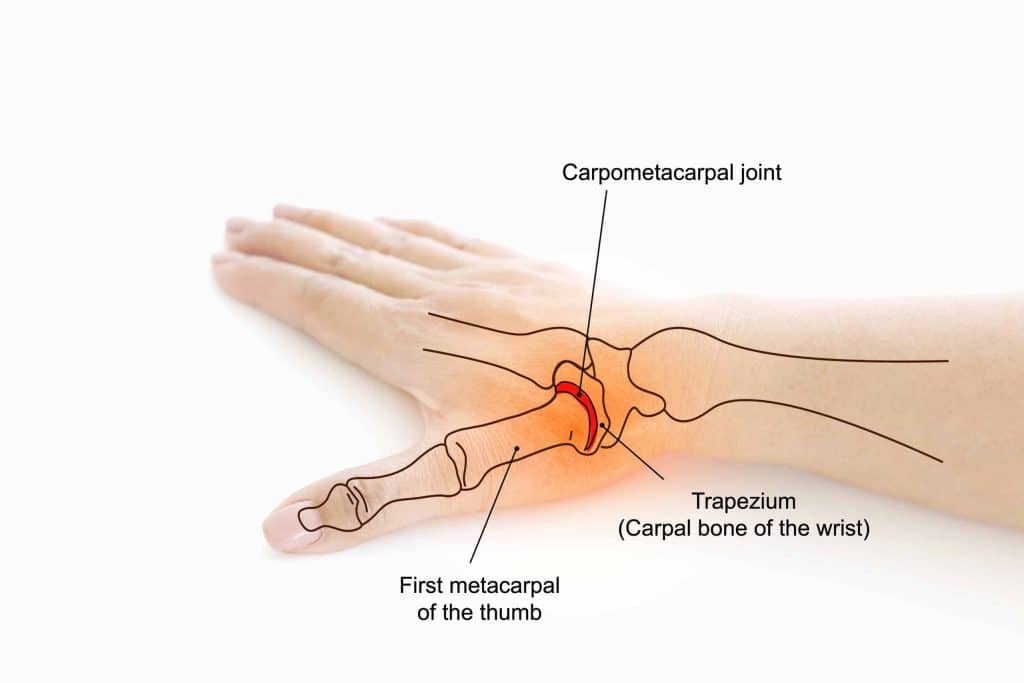
What is Carpal Tunnel Syndrome?
Carpal Tunnel Syndrome (CTS) is a painful condition that is caused by unusual pressure that affects the nerves running through the wrist. CTS pain is experienced from the base of the hand and radiating up into thumb and index and middle fingers.
The carpal tunnel is a protective passage in the wrist that contains several tendons as well as the median nerve. The tendons are responsible for moving your fingers whilst the median nerve controls sensitivity throughout the hand. It is a compact area not too dissimilar from the wiring you find packed inside telephone wires.
However, problems arise when either the carpal tunnel becomes narrowed due to injury or when the pressure around the median nerve increases. When the highly sensitive median nerve is compressed, notable pain can be felt through the wrist and hand. This has the potential to disrupt sleep as well as interfering with the ability to grasp objects firmly.
In most cases, particularly in pregnant women, CTS will usually affect both hands simultaneously.

Symptoms of Carpal Tunnel Syndrome
Besides considerable discomfort spreading up and throughout most of your hand, CTS can also cause numbness or tingling sensations as well as pain that radiates from the wrist and up through the arm, elbow or shoulder.
It is common for the wrist or fingers to also look and feel swollen as well as pain being more problematic overnight. You are more likely to experience worsened CTS symptoms within your dominant hand.
In advanced CTS cases, use of the thumb can be difficult. Your hand may feel weak or you may find yourself dropping items by accident and feeling clumsy when trying to pick items back up.
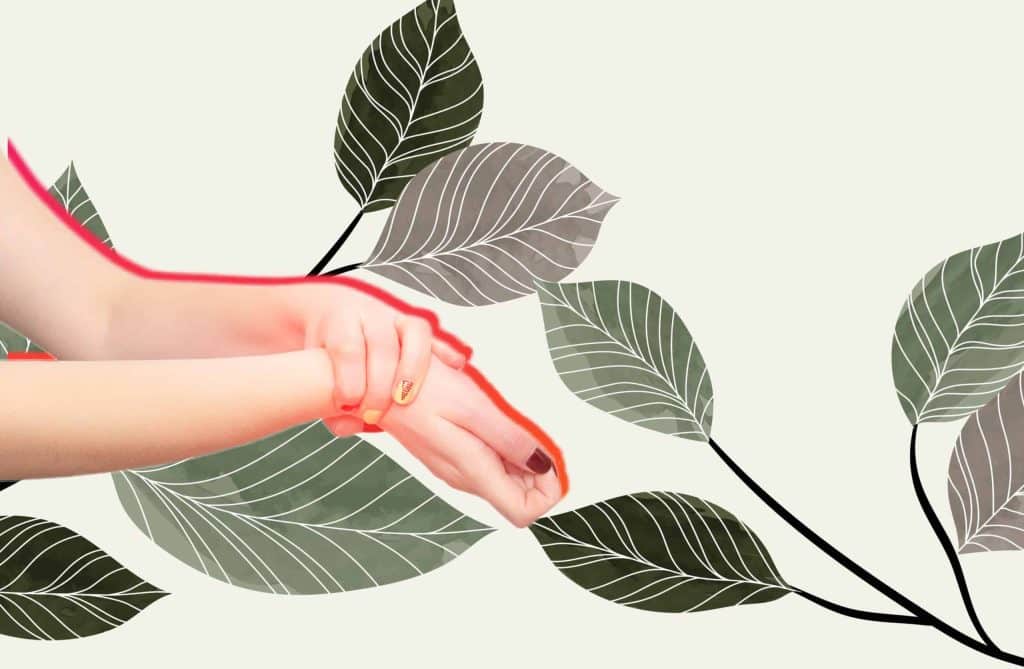
What is the connection between Carpal Tunnel Syndrome and pregnancy?
CTS affects pregnant women far more than any other group in the general population, with almost half of mothers-to-be getting to know CTS as they prepare for motherhood. Up to 10% of pregnant women experience CTS to the point of the condition impacting upon their day-to-day activities. Up to 50% of these women will feel CTS symptoms in both hands.
Pregnancy is one of the strongest risk factors for developing CTS but why is this so? It’s all to do with pressure. As you move through pregnancy, hormonal changes are abound which lead to fluid retention and swelling. In turn, the carpal tunnel and the median nerve housed within are under far more pressure than normal. If your hands, feet and ankles that look puffy during your pregnancy, you are highly likely to also develop CTS.
As pregnancy continues to progress, compression within the wrist increases hence why CTS tends to strike in the latter trimesters. This is when the median nerve begins to radiate pain thanks to the tendons becoming irritated and inflamed. Consequently, thanks to these issues, overall functioning within the hand then tends to suffer.
The hormone relaxin, released during pregnancy to help the body cope with the growing baby inside, can also contribute to CTS. As relaxin is released throughout the body, it affects many different types of tissues, including ligaments within the wrist. Relaxin loosens these ligaments and they can sometimes partly collapse and entrap the median nerve.
In addition to fluid retention and swelling, the physical adjustment by the body to a growing stomach and enlarged breasts that are readying themselves for feeding a new-born also contributes to CTS. As extra weight pulls on the upper shoulders and neck, the shoulders begin to internally rotate and the head juts forward. This leads to a tense upper body and reduced blood flow into the arms, hands and wrists, further enhancing the possibility of CTS.
Furthermore, as if struggling to sleep in the late stages of pregnancy wasn’t bad enough, all those awkward sleeping positions that are being tried out can also exacerbate the CTS symptoms.
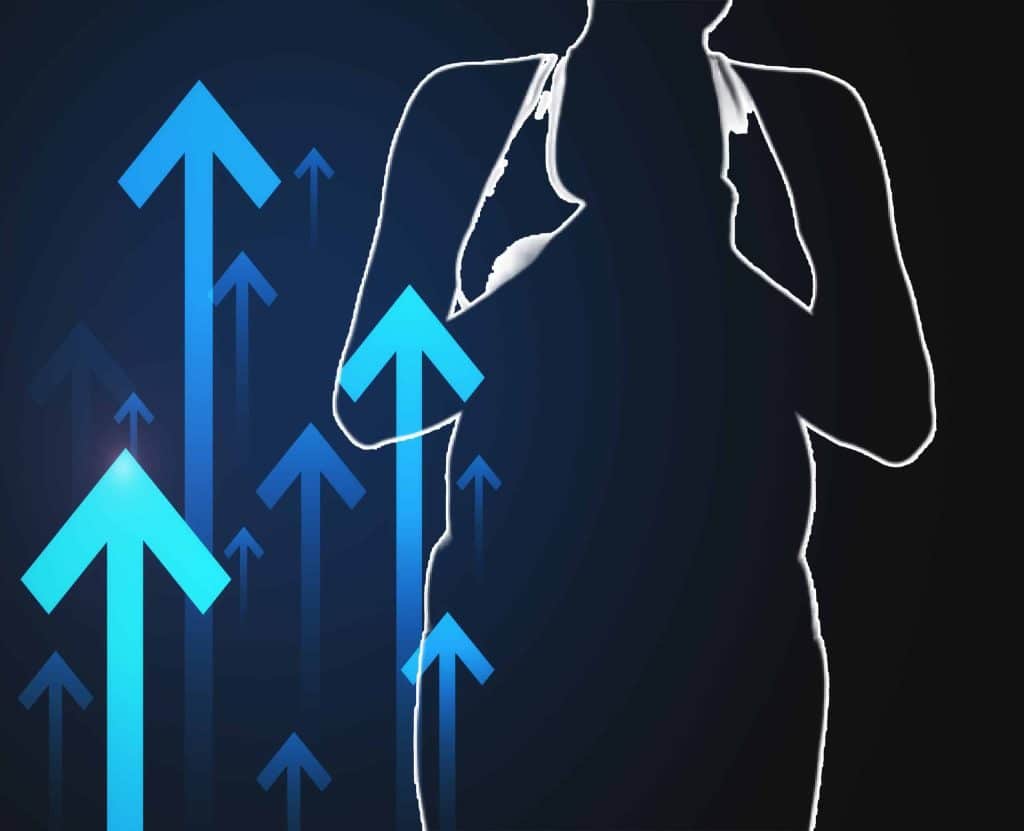
Pregnancy and Risk Factors for CTS
There are several factors that can increase risk for developing CTS during pregnancy. These include being pregnant with more than one baby, excessive body weight, having hypertension or the mother being over 30 years old.
Additionally, if CTS has been experienced within the family, there is a higher risk of developing the condition for CTS is somewhat hereditary in nature. Similarly, if CTS has been experienced in a previous pregnancy, it is common for this niggle to reoccur in a new pregnancy.
Post-Natal Carpal Tunnel Syndrome
Although CTS is much more common in pregnant women, it is also a condition that can carry on into the post-natal stage too. Of those who experience CTS during pregnancy, 50% will still have a degree of CTS one year after giving birth. Three years after giving birth, 30% of mothers still experience a degree of CTS symptoms.
Although these statistics may sound disheartening, pregnancy-induced CTS ceases more readily than CTS that results from any other factor. Indeed, as hormones resort to their pre-pregnancy state, CTS should gradually resolve after childbirth. This usually occurs over a period of a few weeks.
However, if other risk factors are present or a repetitive wrist injury occurs from holding and caring for the child afterward, CTS can persist for longer.
As a general rule, if CTS symptoms begin early within a pregnancy, they will normally take longer to resolve.
Diagnosis of Carpal Tunnel Syndrome via Osteopathy
If you suspect CTS during pregnancy, consulting with an osteopath can provide an accurate diagnosis. To confirm the condition, your osteopath will first conduct an examination of your neck, shoulders, arms and hands. This helps to rule out other conditions that can cause similar symptoms to CTS. This is likely to be accompanied by grip, sensory and range-of-motion tests. These will establish the strength and dexterity that you have in your hands as well as highlighting when symptoms occur during regular daily movement.
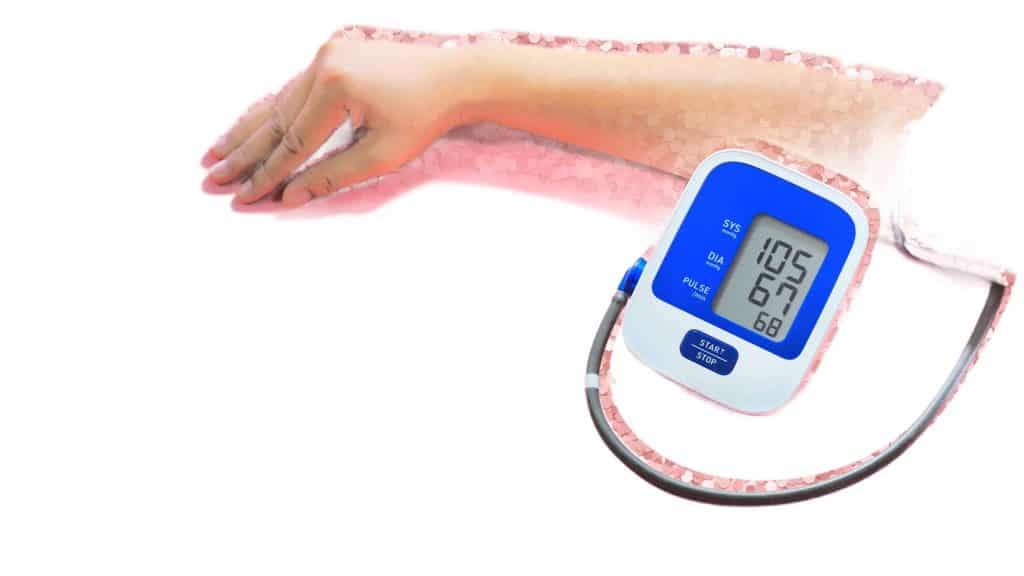
Preeclampsia – An Important Consideration
Upon presenting with symptoms of CTS, your osteopath will be keen to investigate the possibility of another potential condition known as preeclampsia.
Preeclampsia is a complex condition that develops during pregnancy and involves high blood pressure in combination with either protein within the urine or low platelets in the blood. Not only can preeclampsia contribute to pain in the wrists and hands, it can also cause persistent headaches, abdominal pain, nausea, weight gain, unusual swelling, blurry vision and a feeling of being short of breath.
Treating Carpal Tunnel Syndrome in Pregnancy and Beyond – How Focus Osteopathy Can Help
Unlike many doctors, we do not apply the ‘wait and see’ approach. After all, that only leaves you in the lurch.
We understand that although CTS is usually only a temporary inconvenience – experienced during and shortly after pregnancy – it is also a highly irritating problem and one you’re likely to be glad of assistance with. As if you didn’t already have enough pregnancy symptoms to handle without painful wrists in the mix too!
When dealing with the niggling symptoms of CTS, consulting with an osteopath offers up numerous treatment options that are safe for you and your baby, both throughout your pregnancy and beyond.
After providing an accurate diagnosis and establishing exactly how CTS is affecting you day-to-day, we will then narrow down what’s required to manage your symptoms and reduce your pain.
Often the simplest solutions work best so we would usually begin with guidance on how to avoid any specific movements that are causing you significant pain. We would also look at your overall posture and day-to-day activities to see if there is anything that can be tweaked to reduce CTS symptoms. This could include incorporating rest periods and stretch breaks into your day as well as potentially adjusting a desk or workstation set-up.
Additionally, we can teach you gentle exercises that will improve flexibility in the wrist, hands and fingers. These will increase blood flow and reduce pain. Alternating hot/cold treatments as well as stress reduction and fluid draining massage can also prove beneficial.
Splinting is another option, most commonly used at night. This helps to reduce overall strain within the wrist. Your osteopath can provide and adjust the splint for maximum benefit. A good night’s sleep may just well follow!
When your new-born arrives, your osteopath can remain on hand as your wrists are highly likely to be challenged by having a baby to regularly pick up and hold. Here, we can advise on how to hold your new-born without CTS continuing to trouble you, allowing you to move on from wrist pain and focus on simply enjoying these precious moments with your new child.
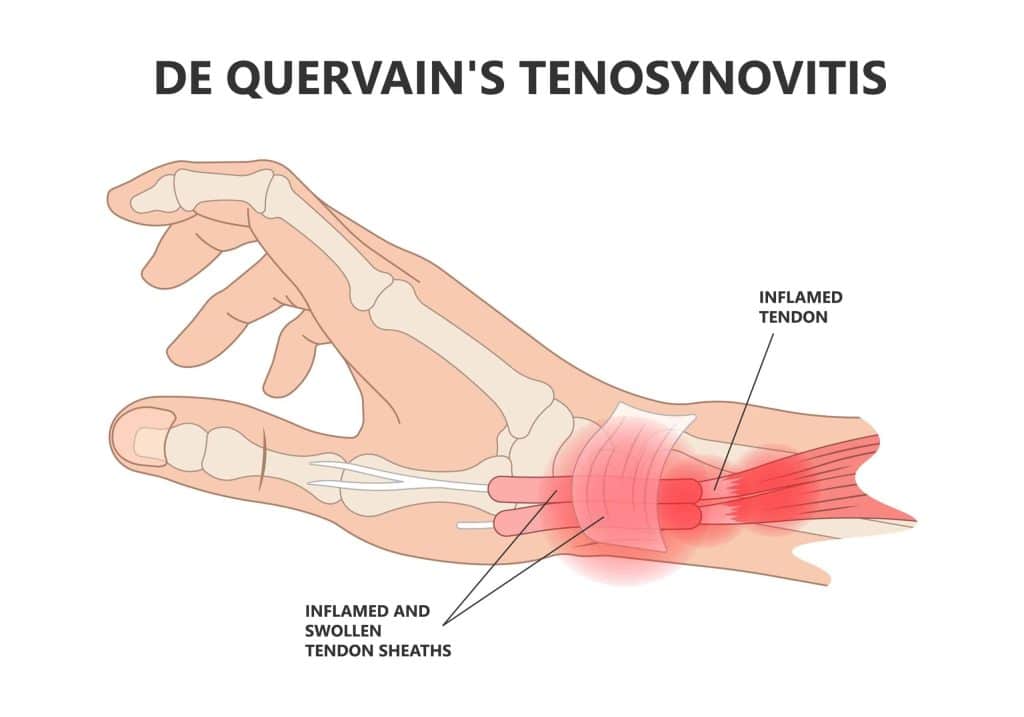
A Quick Note About De Quervain’s Syndrome
De Quervain’s Disease/Syndrome sounds exotic, but you don’t need to travel amid the jungles to develop the condition.
The syndrome affects the tendons located on your thumb, that run in a tunnel (tendon sheath). The thickening of the ligamentous structure over this tunnel causes pain when the thumb is used or moved.
For men, it can occur out of the blue. Yet, for women, it can often be linked to pregnancy. Besides ‘joining the wrist-pain party’, it can also occur in young mothers when picking up their baby.
Symptoms may include swelling or soreness on the thumb side of your wrist, alongside pain when using the tendons around your thumb.
It’s always worth speaking to your Osteopath about De Quervain’s Syndrome as, occasionally, it can mimic the symptoms of other conditions, and vice versa.

